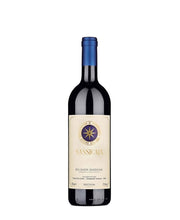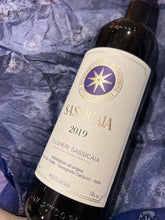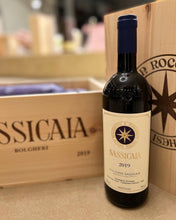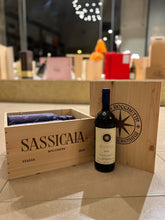FORMAT: 0.75L
GRAPE VARIETY: CABERNET SAUVIGNON, CABERNET FRANC
VINTAGE: 2019
PLACE: TUSCANY-ITALY
ALCOHOL CONTENT: 14%VOL
|
AWARDS
Vinous94 / 100 Wine advocate98 / 100 Decanter100 / 100
|
DATA SHEET:
Purple red color with violet reflections. Expressive and very fine bouquet on the nose, broad, with hints of cherry and aromas of undergrowth, balsamic herbs and rosemary. Very fine and intense palate, with a fresh acidity supported by firm tannins. Balanced and long.
VINIFICATION:
Grape selection using a sorting table to eliminate impurities and any presence of imperfections. Soft pressing and delicate destemming of the grapes using machinery suitable for not breaking the integrity of the grapes and avoiding excessive release of tannins. The alcoholic fermentations (completely spontaneous and without the addition of external yeasts) ended in mid-October and took place regularly and at maximum temperatures of 26-27 °C. Frequent delestages and pumping over outdoors allowed for excellent aromatic extraction and freshness in terms of acidity of the musts. The malolactic fermentations (always without inoculations), carried out in steel, were completed regularly at the end of November thanks to the low external temperatures. At the beginning of December, after frequent racking to clean the musts, the wine was placed in barriques from the first ten days of December 2019.
AGING:
At the end of malolactic fermentation, the wine was placed in barriques using 40% new wood, 40% first passage and 20% second passage. We used French oak barriques (Troncais and Allier in particular) with fine grain and light toasting to avoid overdoing the release of tannins. Sassicaia 2019, after approximately 25 months of aging in wood, was transferred to steel tanks and further selected before final assembly and then bottling. Subsequent aging in bottle before being released for sale.
THE STORY:
In the 1920s, as a student in Pisa, Mario Incisa della Rocchetta dreamed of creating a classy wine. His ideal, as for the aristocracy of the time, was Bordeaux. This is how he describes it in a letter to Veronelli dated 11/6/1974. “…the origin of the experiment dates back to the years between 1921 and 1925, when, as a student in Pisa and often a guest of the Dukes Salviati in Migliarino, I had drunk a wine produced from one of their vineyards on the mountain of Vecchiano that had the same unmistakable “bouquet” of an old Bordeaux that I had just tasted rather than drunk, (because at 14 years old I was not allowed to drink wine) before 1915, at my grandfather Chigi's house.” Having settled with his wife Clarice in the Tenuta San Guido on the Tyrrhenian coast, he experimented with some French vines (whose cuttings he had recovered from the estate of the Dukes Salviati in Migliarino, and not from France) and concluded that the Cabernet had "the bouquet I was looking for". No one had ever thought of making a "Bordeaux" wine in Maremma, an area unknown from a winemaking point of view. The decision to plant this variety on the Tenuta San Guido estate was partly due to the similarity he had noticed between this area of Tuscany and Graves, in Bordeaux. Graves means gravel, due to the stony soil that distinguishes the area, just as Sassicaia, in Tuscany, names an area with the same characteristics. From 1948 to 1967, Sassicaia remained a strictly private domain, and was drunk only on the estate. Each year, a few cases were put to age in the cellar in Castiglioncello. The marquis soon realized that the wine improved considerably with age. As often happens with great wines, what were once considered defects, over time turned into virtues. Now friends and relatives encouraged Mario Incisa to deepen his experiments and perfect his revolutionary winemaking style for that area. The 1968 vintage was the first to be released on the market, with a reception worthy of a Bordeaux Premier Cru. In the following years the cellar was moved to temperature-controlled rooms, steel vats replaced wooden vats for fermentation, and French barriques were introduced for aging.








